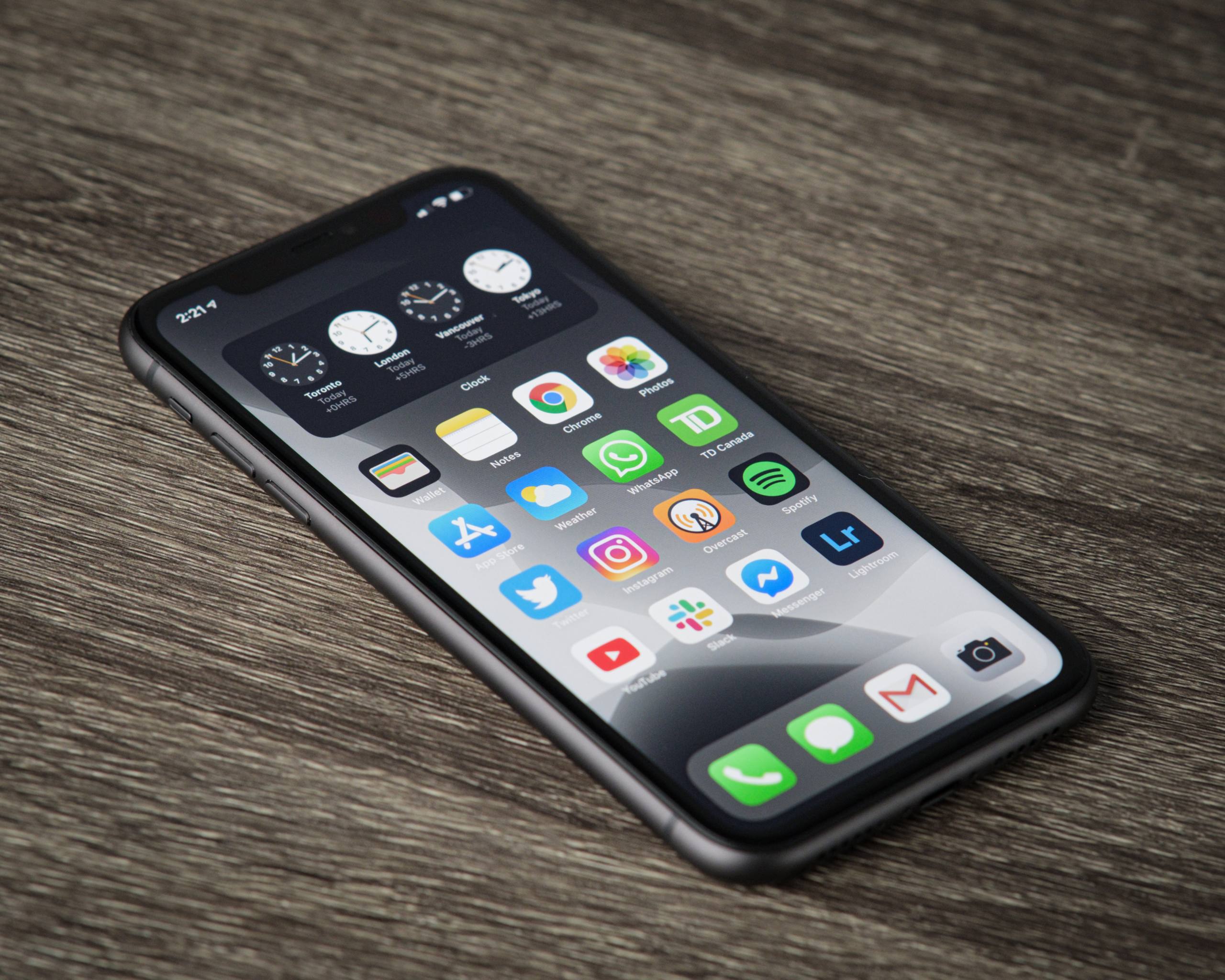Reading Time : 1 Mins
10 Key Steps in Mobile App Development Process
Smartphones have today become a part of every business, every household, and every individual irrespective of geography or type of business. Even the most traditional brands have accepted that engaging their customer audience on their smartphones and other mobile devices, such as tablets, is the most effective way to capture their imaginations, build brand interest, and lead them to purchase. That’s why the past decade has seen an explosion in smartphone users and a tsunami of mobile apps. Today there is an app for almost everything we can think of, ranging from apps for the most personal of requirements to shopping and enterprise operations.
However, with so many apps flooding the market, the mobile app space has become very competitive. So as a developer, when you think about building a marketable app, whether you are building iOS apps or Android, you need to think beyond just “how to make an app” to the technicalities of putting together an application. Your designed app will gain visibility and make you money only if users are willing to download it and actually use it instead of uninstalling it after the first few tries. To be able to do that, a mobile app developer needs to learn how to develop an app, which means finding that perfect mix of usability, relevance, and attractive features. To help mobile app developers build competitive and popular apps, we’ve broken down the mobile app development process into 10 steps.
10 Steps in Mobile App Development Process

Step 1: Develop Your Idea
To begin with, you must have a clear concept and a definite idea of what you want to offer your target audience: whether it is building an iOS or Android app. Ask yourself questions like: What is the need that I am fulfilling or how to make an app that solves a problem? What is that gap in the market that I can fill? Your idea may not be unique, or the first-ever app of its kind, but maybe it is best not to develop an app for a space that’s overflowing. Just remember that some of the most successful apps are those that have solved real customer problems.
Once you identify a problem that you feel convinced you could help resolve, look for ways that your app can offer concrete benefits to your target audience. It is during this stage that you should give your mobile app development concept a visual representation. Draw rough sketches of the interface of your app, putting all the details on the document.
When thinking of how to design an app, including in the sketches all the main features, the structure and layout of the app, buttons/icons detailing how the user will navigate the app. This gives you clarity as a mobile app developer and lends more structure to what until now was only an idea in your mind.
As you develop your idea, another important aspect of the mobile app development project is app monetization. In addition to helping the customer, you also want to be able to make money, whether through ads or charging for the download itself or by offering a free basic version and charging for premium features. If you expect a potentially large user base, you can run ads on the app while you offer it for free, be it building apps for iOS or Android. Determine your monetization strategy at this stage itself and modify your design to incorporate monetization features.
Step 2: From Ideation to Planning
Once the core idea of the app has been clearly defined, the next step in mobile app development is to identify various elements involved in the actual planning. Remember that the chances are that there is already at least one, if not several, app similar to your idea already in the app store. But don’t let this stop you. Instead of waiting for that perfect unique idea, focus on developing your target audience. Spend some time researching on why other similar apps did or did not perform well, why some of them are more successful with the user base, and so on. Make sure that your app will be compatible with a variety of brands and devices and mobile operating systems (OS).
Your research should center on these four prime questions that will shape the future of your mobile app development project:
- Who are my competitors
- How to design an app that best fits my requirements
- What will be my technical specification
- How can I best monetize my app
Once you have answered these questions, adjust your app idea, and incorporate the features that will appeal to the users. Several open forums allow you to submit your app design and idea and give you feedback.
Step 3: It’s Time to Design
It’s a no-brainer that good design is critical when you create a mobile app. As a mobile app developer, you must focus on aspects such as touch gestures, colors, conformity to OS design standards, app layout, and UI designs. A mobile app that is intuitive, user-friendly, and works fast is always more likely to resonate with users. It is in this stage that you put your ideas and features together to create a mobile app prototype or a wireframe. It works as your blueprint and guides you throughout the app development process. Once you can perfect and finalize the prototype, it can serve as your reference point later in the mobile app development project. You can use any of the wireframing tools available online like Moqups, HotGloo, Gliffy, and Balsamig.
Check out these best practices in Mobile App Design.
In addition to letting you play around with graphics and all your placeholders, these tools also allow you to add fully functional buttons that let you click through icons. This step helps you clearly understand the connection between various screens and the mobile app’s navigation.

Step 4: Now the Building!
Now comes the actual mobile app development stage. The goal is to create the best possible version of the product you have in mind within the budget and time constraints. To begin with, choose the type of app platform you’re building for. Here are the key mobile app development platforms:
- Native apps: These apps are specific to a particular platform. While they deliver the best user experience, creating them requires a higher skill level. Get more details here
- Web apps/ single page web apps: These apps are cheaper and faster to build, and are easily compatible with multiple platforms. You can use CSS, JavaScript code, or HTML5 to build web apps
- Hybrid apps: These are the new kids on the mobile app development block. You need to leverage pre-built native containers and uses them in tandem with on-the-fly web coding
Step 5: Create a Prototype
Before you build and launch the actual app in the app store, develop a working prototype that is closer to the real thing in terms of layout and functionalities. You can use the prototype for pitching your product to investors, potential buyers, for procuring any licenses, defining the APIs and databases, and storage needs.
Step 6: Add Analytics
Building in a layer of analytics into your mobile app is a great idea, and you can choose from Google Analytics, Localytics, Flurry, Preemptive, and Mixpanel.
This will allow you to monitor your app’s performance once it is released.
Read how having a data analytics roadmap can be a game-changer for your business.
Step 7: Testing the App for Performance
Launching a mobile app without a beta test can prove disastrous. You have no idea how the mobile app you developed will perform in an actual environment with multiple users. A strict beta test will help you get feedback from your target users, earn visibility in app stores, and fix what needs to be fixed in your app. But there are a few points to keep in mind as you conduct a beta test, such as:
- Define your target audience: This will help you find the right testers, which results in a relevant market analysis
- Spot and eliminate bugs: Even the beta version of your app must be flawless because you will be introducing it to your audience. So try to eliminate all bugs in the initial testing phase
Here are 5 tips that can come in handy with your mobile app testing challenges
Get your friends, family, colleagues, experts, and whoever is willing to give constructive criticism to review your app’s beta version. Ask them to use it extensively and help you identify any flaws and design snags to save you the pain of making costly corrections post-launch.

Step 8: Release the App
After a successful testing phase, you’re now ready to roll that mobile app out to a wider audience. You can choose to release the mobile app on Android or iOS, or both. Do note that both these app stores have different sets of policies when it comes to publishing a new app, and both require you to have a developer account with them. You can also sign up with them as an individual or company for a fee. Google Play allows you to publish your mobile app for Android instantly and reviews it later.
On the other hand, Apple’s app store needs every app to be reviewed and approved before it can go live, a process that can take up to two weeks even when no change is required.
Step 9: Track the Metrics
So now, you’ve launched your app, and you can see users downloading it. But your work does not end here. You need to continue to track app performance, and its metrics (remember the analytics tool we added?) like any failures users experienced during specific actions, social shares, profiles of users actively using the app, emergent behavior, etc.
Step 10: Don’t Get Complacent…Upgrade!
If you don’t upgrade the basis of the analytics and metrics collected, then your mobile app can soon become obsolete. So make sure you continue to add new functionalities and features to make it more appealing to your users.
Check out this blog on how you can optimize the performance of an app in different ways.

Finally…
Mobile app development may seem a long and tedious process to someone new to the field, but with the right training and tools, they can become a pro at mobile app development. Mobile apps are a digital extension of a brand and offer your customers an exciting way to access your products. A well-developed mobile app will help increase your revenue and build credibility with your customer audience.
Looking for a mobile app development company for your app development needs? Get in touch with Zuci Systems today.
Frequently Asked Questions
1) What is the mobile app development process?
The mobile app development process refers to the series of steps taken to create a mobile application, from conceptualization to deployment.
2) What are the key stages of mobile app development?
It typically includes the key stages like ideation, design, development, testing, deployment, and ongoing maintenance.
3) How long does it take to develop a mobile app?
The development timeline varies based on the complexity of the app, features required, team size, and experience level. Simple apps might take a few months, while more complex ones could take a year or more.

Loves getting creative with mundane topics in addition to geeking out over books and movies.
Share This Blog, Choose Your Platform!
Related Posts




















